American Honey Film Essay
By Viriane
“Sultry shades of sunlight dance past Star, a shining girl despite the chaos around her. Surviving in the harsh realities of America’s individualistic, impoverished society, she clutches the produce that could feed her family, maybe even herself. Just 18 years old and fighting to survive, yet it all looks so beautiful. The camera’s low angle gives her height and power, even though she’s at her most vulnerable, relying on instinct just to keep going. She’s a death star, made of fabulous dust. She’s energy. Despite the hunger, the noise, the heat of everything pressing in, Star never loses her brightness.”
A Story Through Star’s Eyes – A Synopsis
American Honey depicts modern-day America through the eyes of its protagonist, Star. It’s a coming-of-age tale that explores youth, love, and longing, with the broken promise of the American Dream as its backdrop. We follow Star as she finds her way alongside a group of young nomads selling magazines door-to-door across the Midwest. Through her eyes, we experience the ache of first love, the drift of rootlessness, and the quiet endurance it takes just to survive. Dichotomy sits at the heart of the story. Andrea Arnold draws us into a world of opposites: prosperity and poverty, freedom and isolation, beauty and decay. It’s a haunting, sun-drenched road movie with a naturalistic style at its core: intimate, immersive, and deeply human.
I See Myself in Star
The film makes me feel alive. I see myself in Star, in her naivety, her willingness to trust, her quiet hope for a life better than the one she was given. She stays true to her heart and falls deeply in love, even when she isn’t fully chosen in return.
I see myself in Star when she holds back from the group at first, cautious and observant. Over time, she finds her place, but never loses her integrity. She doesn’t compromise. Her ability to remain kind in an unkind world, to stay soft when everything around her demands hardness, is a strength I admire deeply.
I see myself in Star when she loves. Her relationship with Jake reminds me of my first love: the giddiness, the presence, the whispered dreams. But also the ache, when love becomes uneven, when it starts to cost more than it gives. Jake sees her light but still takes from it. People always try to take from brightness. Yet Star never lets hers fade.
Maybe that’s why I love this film so much. It captures youth as messy, unformed, full of risk and sweetness and contradiction. It doesn’t shy away from showing systems of poverty, exploitation, and neglect that shape these characters’ lives. But it also holds space for their joy, humour, and quiet endurance.
I see myself in Star.
Maybe you will too.
Let’s talk structure and deeper themes ….
Illusions of Freedom
Poverty is the lens through which American Honey sees everything. It’s the backdrop, the structure, the quiet weight under every decision. From the very beginning, we understand that this world, this group of teenagers traveling door-to-door selling magazines is rooted in survival. The idea came from a real article Andrea Arnold read in the New York Times. Real teenagers live this way.
At first glance, they appear free. They travel wherever the wind takes them, staying in motels and abandoned houses, without mortgages, routines, or expectations. They jump through fires, hook up, sing in parking lots, present, untethered. This is often romanticised, especially by older viewers who envy the group’s untied freedom. But Andrea Arnold is careful to reveal the deeper truth: this freedom is an illusion.
Crystal, their boss, holds control through fear and hierarchy. Their lifestyle is transient, uncertain, and emotionally precarious. Can Star and Jake ever really have their dream house in the woods? Can Crystal keep her power without preying on impressionable young people searching for belonging?
They drift through the country for hours, through lush suburbs, past fenced-off houses and pristine lawns. The American Dream is right there, under their feet, but completely out of reach. Prosperity is pictured as older, white, settled, while the crew remains caught in motion, neither wanted nor grounded. Their stories sell magazines, but their own stories remain suspended, unheard, unresolved.
It made me question the very nature of how we define freedom, and what it actually means to live freely.
Cinematic Technique
Robbie Ryan’s cinematography gives American Honey its emotional texture. His use of natural light, from the warm embers of sunset to the cool viridian blues of dusk, creates visual contrasts that mirror Star’s shifting inner world. The handheld camera adds raw immediacy; its movement feels organic, unfiltered, and deeply human. Maya Deren once said, “Don’t forget that no tripod has yet been built which is as miraculously versatile… as the human body.” Ryan seems to follow this exactly, letting the camera respond to instinct and emotion over control.
Arnold and Ryan’s loose compositions and naturalistic mise-en-scène, from cluttered motel rooms to wide-open skies, root the film in lived-in realism. They often shoot into sunlight, letting lens flare and glare wash across the frame. This softens the world, heightens immediacy, and blurs the line between realism and reverie. The camera sways, jolts, and lingers like a heartbeat, echoing the instability of youth.
American Honey draws from the traditions of so-called “amateur” cinema, handheld shots, improvisation, minimal lighting, but in doing so, reconnects with the form’s most honest power. The result is emotionally resonant and unmistakably Arnold’s: raw, instinctive, and grounded in the tactile world of her characters. Together, she and Ryan craft something intimate, improvised, and deeply cinematic.

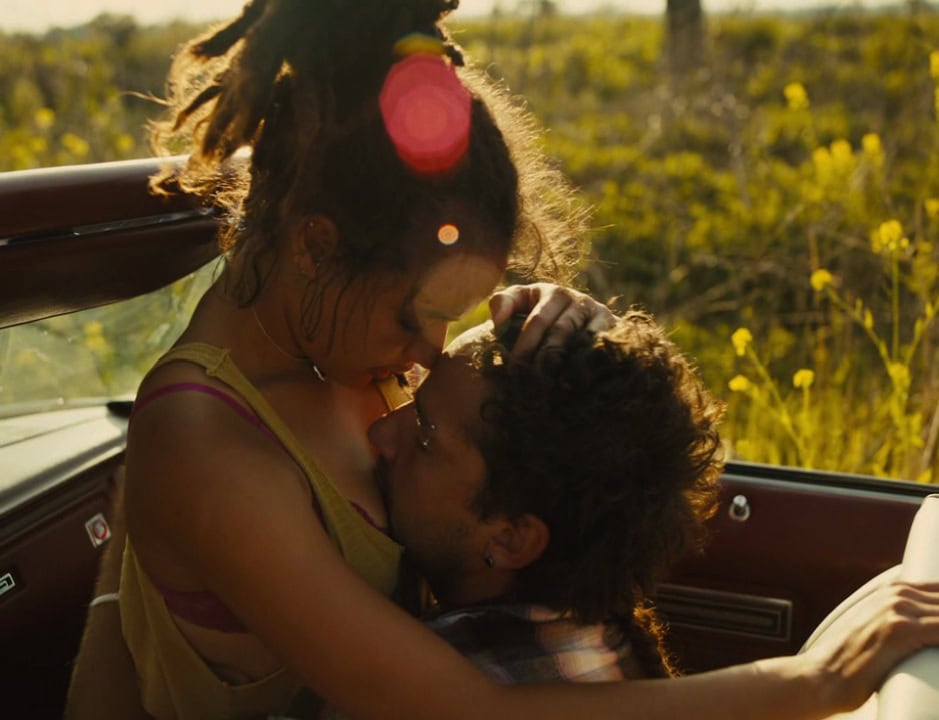
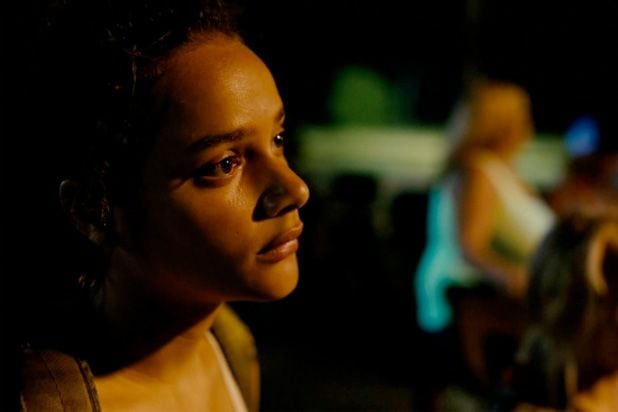
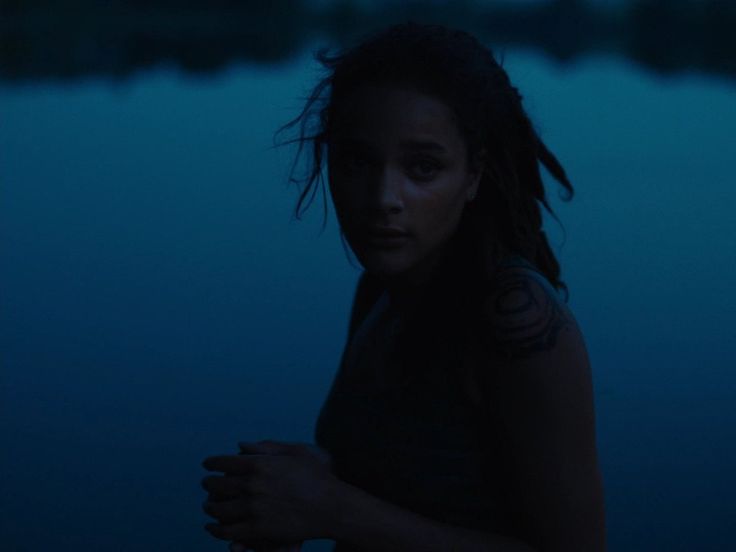
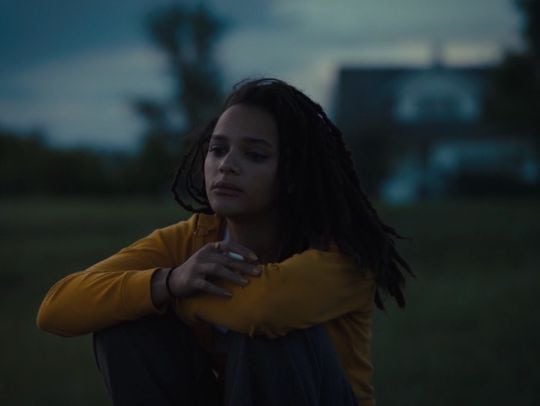
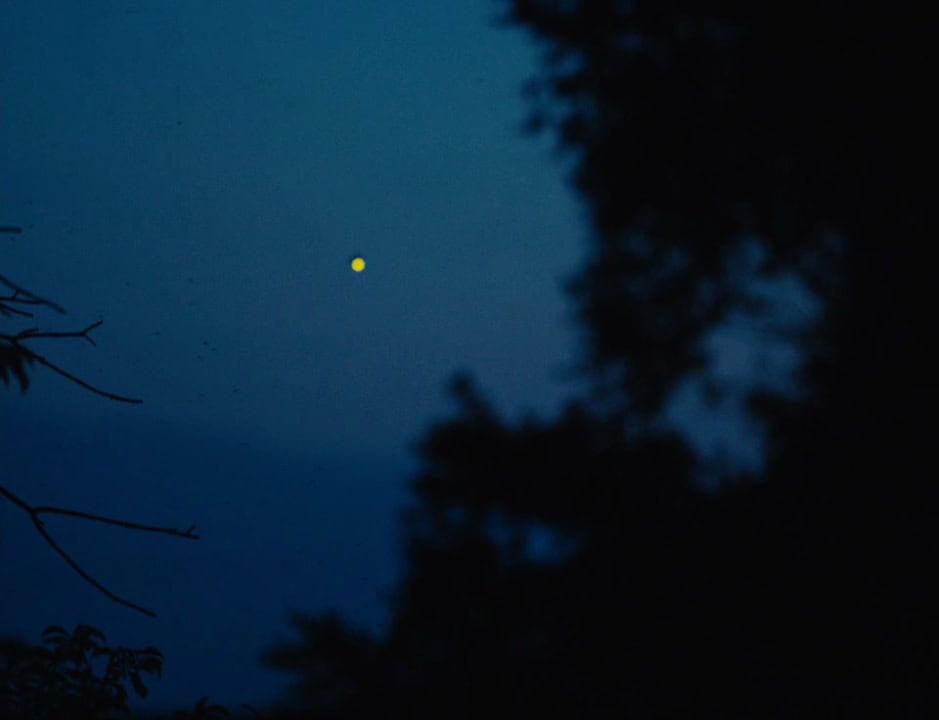
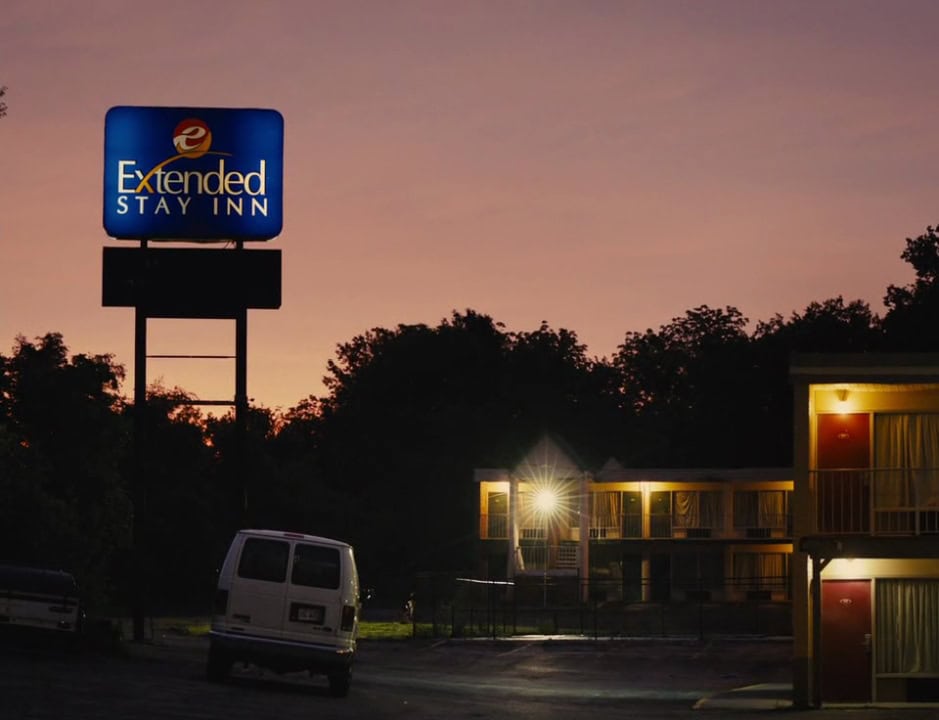
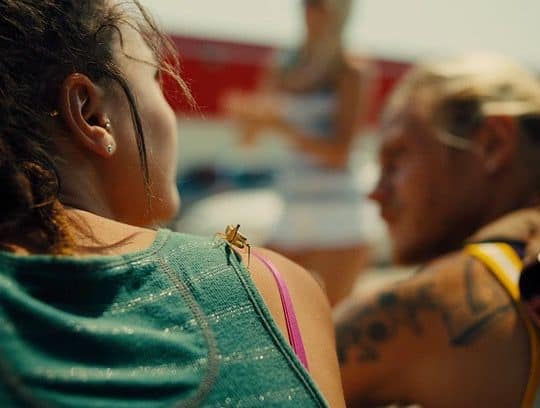
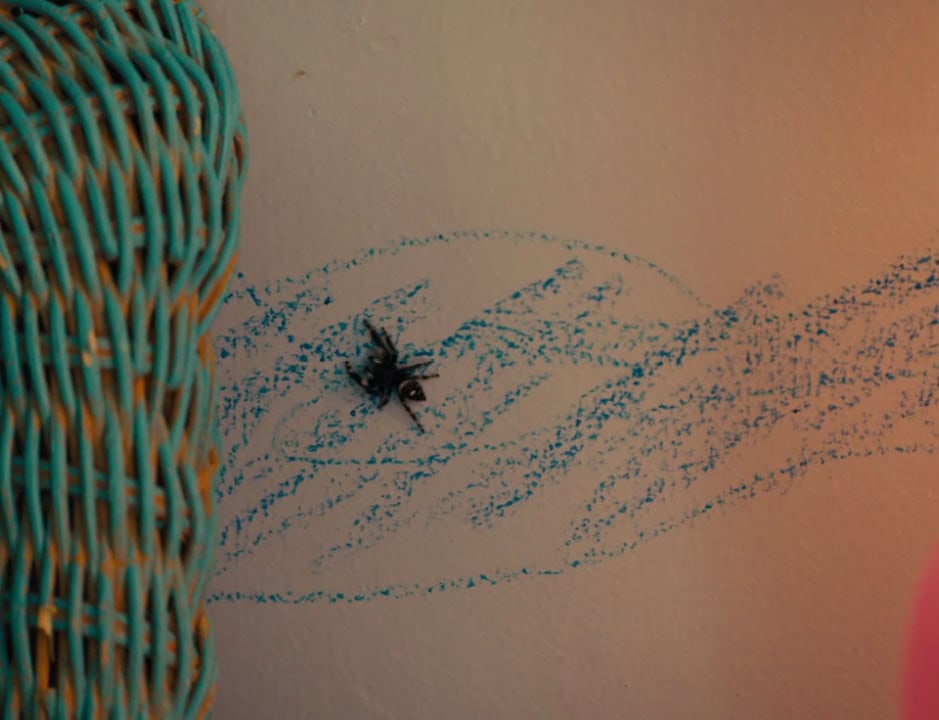
Closing Reflections
Despite the harsh realities around her, Star’s strength lies in how she stays rooted in kindness. Her compassion is quiet but unwavering. She feeds hungry children. She saves a drowning bee. Maybe these moments are metaphors. Maybe Star sees herself in the small, the vulnerable. Her brightness never fades, no matter how much the world tries to take from it.
The emotional climax of the film gives way to Star’s most vulnerable moments of longing, shame, and resilience. After a night spent in quiet transaction, a choice shaped by desperation and a flicker of hope, she returns late. The camera stumbles through tall grass with her, handheld and breathless, mirroring her unease. Inside, Jake finds her. He asks if she’s okay, soft, almost tender, but when she doesn’t explain the man who dropped her off, his tone shifts.
“Who was that? Who’s the guy in the car?”
Then sharper: “Did you fuck him?”
Again: “Did you fuck him?”
“No,” she says, barely above a whisper.
He doesn’t believe her. But he never really asked for the truth, not from someone who was never fully his.
Star doesn’t fight back. She reaches into her pocket and pulls out the crumpled bills, not a gesture of triumph, but something more fragile. She murmurs what they once dreamed: the trailer in the woods, a place of their own. Maybe it could still happen. Not just money. A dream. A trembling offering of belief in something better.
But Jake does not meet her there.
He grabs her. Lifts her dress. Invades her space with a gesture both humiliating and disturbingly intimate. The camera does not look away. It holds us in the moment, still and unblinking, forcing us to sit with the discomfort. The blurred lines between possession, pain, and the desperation to be loved. Star does not cry. She does not move. She simply stays.
“Why do you care? You fuck Crystal anyway,” she says. And something in him fractures. He slams his fists on the wall beside her, flips furniture, repeats the accusation until it loses meaning. Rage replaces language. Star watches, scared, silent, but present.
Then he leaves.
She does not follow. She does not collapse. She stays. And in that stillness, she holds something intact: her selfhood, her strength, her light.
We then find Star alone in a field at dusk. That is when she sees it: a bear. Large, quiet, unmoving. Nature, personified. She does not run. She does not scream. She meets it with open curiosity. Calm, uncertain, but present again. The bear roars and leaves. Is it a symbol of her fear? her confusion? her strength? Whatever it is, Star meets it on her own terms.
Later, while the others dance around the fire, Jake returns. He says nothing. He simply places a small turtle in her hands. A gesture of recognition, perhaps even reconciliation. A flicker of quiet understanding. He sees her not as something to possess, but as who she is. Someone who notices. Someone who protects. Someone still connected to something bigger.
While the group dances by firelight, Star walks away. Into the water. Viridian shades wash across her skin as she baptises herself in silence. A purge. A release. A spiritual reset. Water holds strength without force. It heals through movement. Star does not need resolution. She returns to herself.
Andrea Arnold closes not with plot, but with feeling, what some might call a poetics of realism, grounded in sensation, texture, and time.
So is American Honey a love story? A survival story? A girl searching for her place in the world?
It is all of it, and more…
References
- American Honey (2016), directed by Andrea Arnold.
Stills sourced from ShotDeck. - Yazıcı, A. (n.d.). American Honey (2016) fan-made movie poster. Retrieved from Behance: [https://www.behance.net/gallery/219119823/American-Honey-(2016)-Movie-Poster]
- Deren, Maya. “Amateur Versus Professional.” In Essential Deren: Collected Writings on Film, edited by Bruce R. McPherson, 18. Documentext / McPherson & Co., 2005.